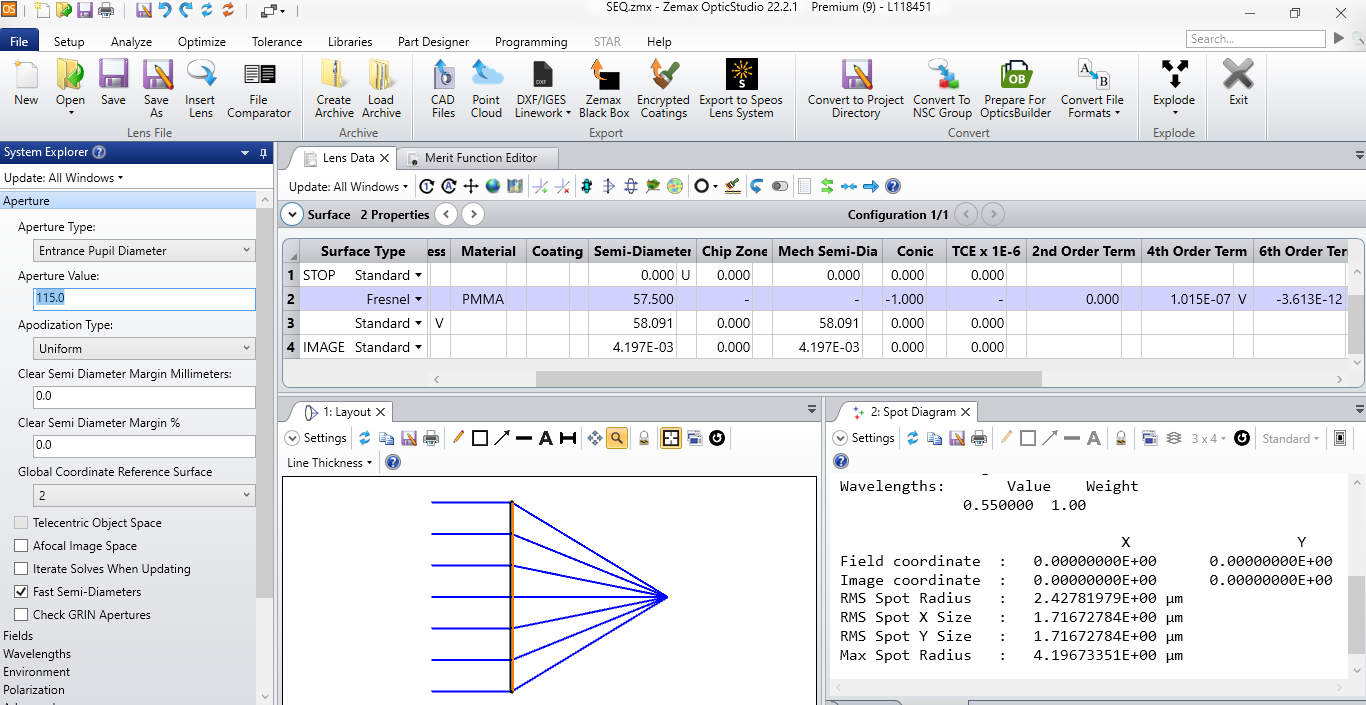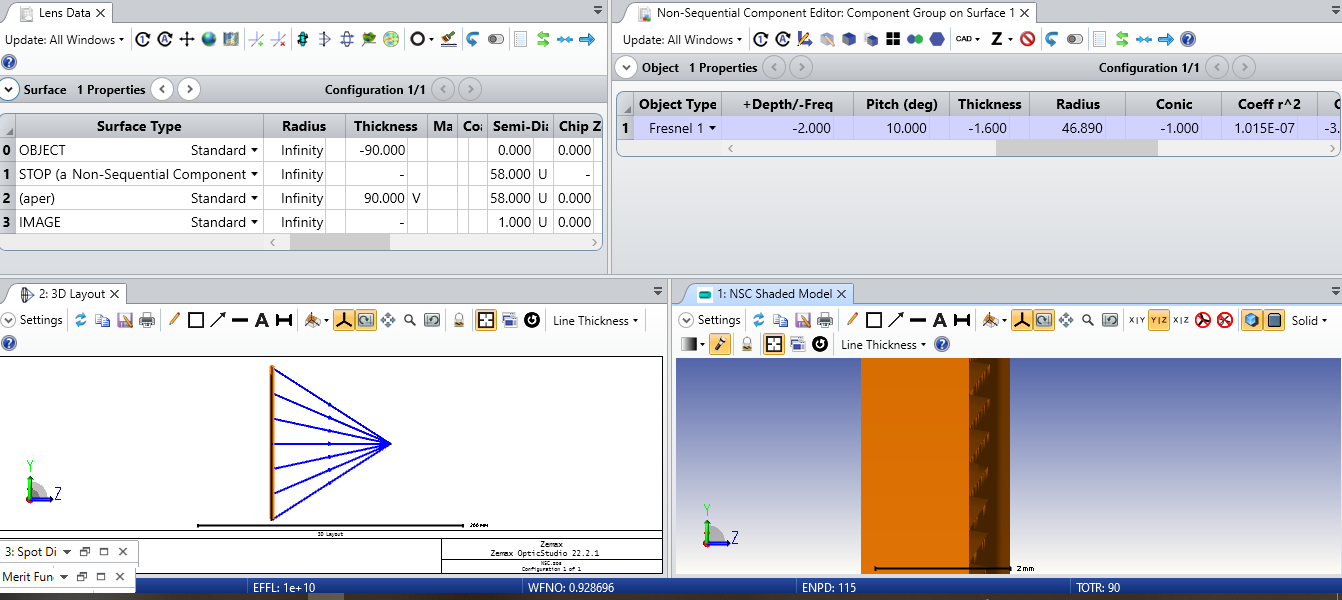Dear Zemax community,
I have been trying to design a bottom lens for a projector with a BFL of 90mm, Clear Aperture = 115 mm.
We started with initial Edmund optics concentrator Sequential design except that we had to keep the second surface with Fresnel coefficients shown below.

We then copied those optimized base radius and coefficients in NSC Editor and gave the desired groove frequency of -2, pitch = 10. But in mixed mode, the surface is not able to focus the marginal rays until we set the object position in the reverse direction.

Is it the right approach, if yes then:
- why doesn’t it show correct EFFL in mixed simulation?
- Why is the convergence not shown in shaded model?
- How to use rms optimization in mixed mode?
And in case it isn’t the right approach, I would like to know the right direction.


